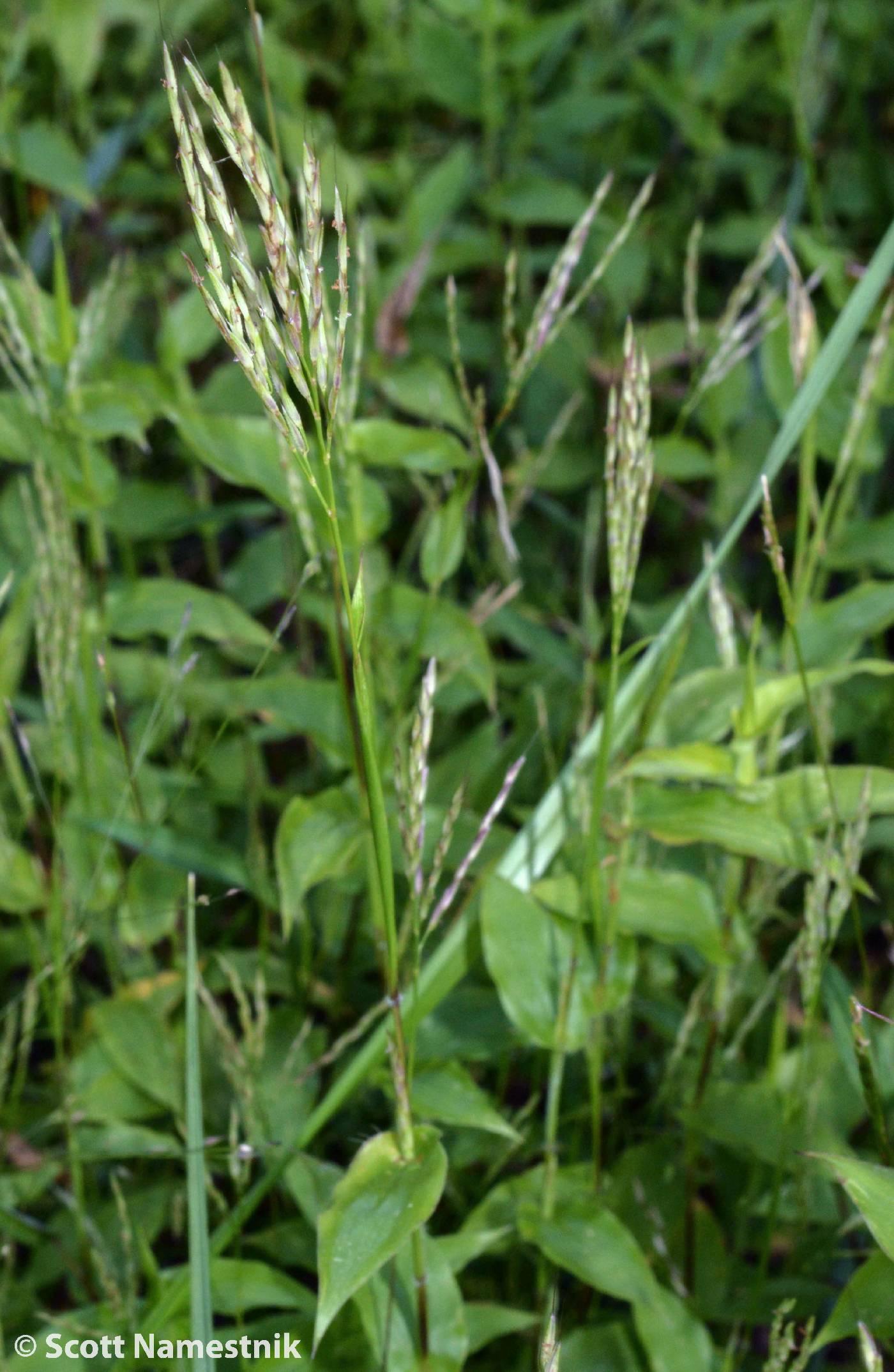Arthraxon
|
Family: Poaceae |
Plants annual or perennial; scrambling. Culms 0.5-2 m, ascending to decumbent, often rooting at the nodes, branched. Leaves not aromatic; sheaths open, at least the outer margins pubescent, usually with papillose-based hairs; ligules membranous, fimbriate or ciliate; blades ovate to ovate-lanceolate. Inflorescences terminal and axillary, panicles of subdigitate, often flabellate, clusters of rames; rame internodes not sulcate; disarticulation in the rames, beneath the sessile spikelets. Spikelets in heteromorphic sessile-pedicellate pairs or appearing solitary and sessile, pedicels greatly reduced and lacking spikelets. Sessile spikelets bisexual, with 2 florets; calluses absent or blunt; glumes equal or subequal; lower florets sterile, reduced to an unawned lemma; upper florets bisexual, awned (rarely unawned); anthers 2 or 3. Pedicels 0.2-3 mm, not thickened, not fused to the rame axes. Pedicellate spikelets absent or rudimentary. x = 9, 10. Name from the Greek arthron, segment, and axon, axis, referring to the jointed inflorescence axes. Spikelets usually paired on the rachis of the spike, one member sessile and fully developed, the other pedicellate and usually ±reduced (or even obsolete); normal spikelets alternate and laterally appressed to the articulate rachis, the rachis- joint and spikelet commonly falling as a unit; normal spikelet with firm glumes, 2 very thin, membranous lemmas, and no palea, the lower lemma empty and awnless, the upper subtending a perfect fl and usually awned from near the base; low, decumbent or creeping grasses with lanceolate or lance-ovate lvs cordate-clasping at base, and with 2-many simple or often branched, usually subdigitately arranged spikes. 7, warm Old World. Gleason, Henry A. & Cronquist, Arthur J. 1991. Manual of vascular plants of northeastern United States and adjacent Canada. lxxv + 910 pp. ©The New York Botanical Garden. All rights reserved. Used by permission. |

